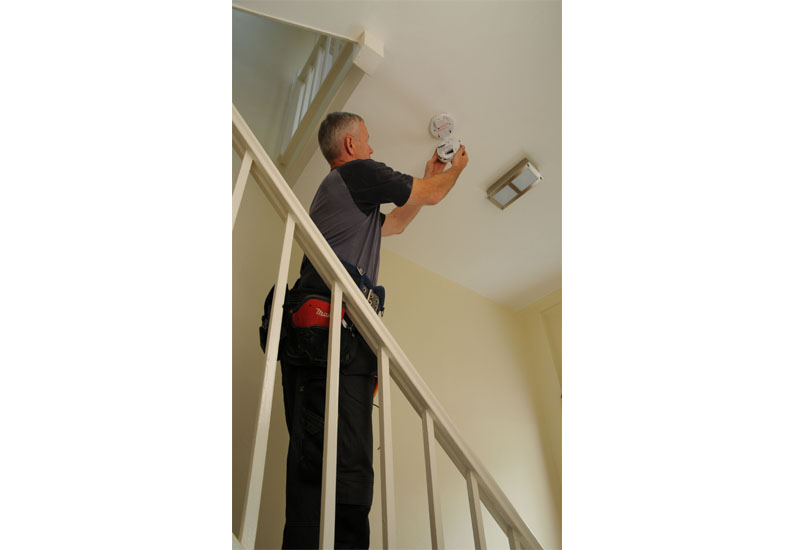
Kidde Safety Europe reviews the current guidance on smoke and heat alarms to help improve fire safety in homes.
Smoke and heat alarms are essential in minimising domestic fire fatalities and injuries, but guidance on the types, number and locations of alarms can be confusing and often conflicting. Although alarms may be requirements of National Building Regulations, rented homes regulations or other mandatory rules, the most comprehensive guidance can be found in the Code of Practice BS 5839-6:2013.
Mains alarms
BS 5839-6:2013 applies to any domestic properties – whether existing or new, rented or owner-occupied. It defines
‘Grades’ and ‘Categories’ of systems comprising smoke and heat alarms. Essentially, ‘Grade’ addresses the reliability of a system in terms of its power sources. National Building Regulations and BS 5839-6:2013 are agreed in demanding Grade D mains, interconnected smoke and heat alarms with back-up power for all new-builds. But the Code also recommends Grade D for most existing housing and all rented properties as well. And, of course, Grade D mains systems should be professionally installed.
There is less agreement on ‘Category’, which sets out how many and where smoke/heat alarms are required for
detection. Typically, for new houses up to three storeys and most existing homes, the Code recommends Category LD2 – now considered the norm for the majority of domestic properties. This means smoke alarms in all escape routes and areas where fires might start, such as living rooms, plus heat alarms in all kitchens. Regulations in
Scotland and Northern Ireland effectively mirror these recommendations.
Approved Document B
However, Approved Document B for England and Wales falls short, requiring only Category LD3 with alarms in escape routes and some kitchens. But the Code stresses that with LD3 the evacuation time once fire is detected in the circulation area might be quite short and “might not prevent death or serious injury of occupants of the room where fire originates”.
BS 5839-6:2013 reviews various types of alarm and what they do best. Ionisation smoke alarms are sensitive to small smoke particles from rapidly burning, flaming fires but less so for smouldering fires and smoke that has travelled some distance. Optical smoke alarms are sensitive to larger particles from smouldering fires and less prone to nuisance alarms than their ionisation equivalents, especially from steam.
Nuisance alarms result in disabling and could lead to death or serious injury. Heat alarms respond more slowly to
fires than smoke alarms but are less likely to give nuisance alarms and require less maintenance. They must always be interlinked with smoke alarms.
The Code recommends which types of alarm are most suited to specific areas, based on these performance characteristics: optical alarms for escape routes (halls and landings) and bedrooms; heat alarms for kitchens and garages; and ionisation alarms for living rooms. Alarms should preferably be ceiling-mounted at least 300mm (horizontally) from walls or light fittings. For LD3 systems, no point within the circulation area should exceed 7.5m from the nearest alarm and there should also be a smoke alarm between each bedroom and every other room (except sanitary accommodation).








